Although you can quickly build an electric fence, it’s not that simple.
A person must obey the rules and regulations regarding installation, residential and farming purposes, and similar rules to avoid law problems.
If not, a person must pay penalties and complete the subsequent procedures until they fulfill the standards for a correct fence application.
But, what are the USA electric fence laws & what rules should a person obey? Read below.
Table of Contents
Electric fence rules in California
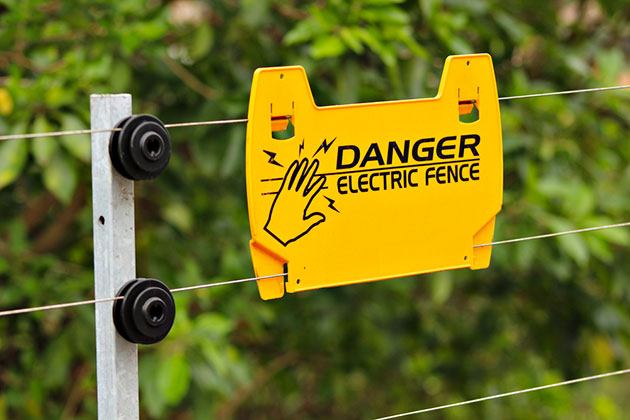
According to the American Legal Publishing and the International Electrotechnical Commission, an electric fence is designed to conduct electric current along the wires.
When an animal or a person touches the wire, they will receive an electric shock.
In addition, the installation, construction, or modification of any of the electric fences or walls shall require planning approval.
The approval must be building permitted to ensure compliance with applicable regulations regarding the electrified fence.
However, there are specific exemptions.
1. Electrified fence exemptions
A person does not have to get a building permit by the following standards.
- Electric fences and walls are less than 36 inches in height.
- Retaining walls are less than 4 feet in height, as measured from the bottom of the footing to the top part of the wall unless they support a surcharge.
2. Electrified fence approvals
The table below shows the maximum height of the fences and walls required in the yard areas.
| Location | Maximum Height |
| Front yard | 42 inches |
| Interior and rear yard | 7 feet in height |
| Street side yard | 42 inches in the required front yard area and 7 feet behind the front yard setback to the rear of the lot |
3. Electrified fence standards
a. Location
Electric fences shall be prohibited in all zoning districts, except for the following standards:
- Industrial Zone District (M-2), provided that the fence is not located along the property lines abutting property in residential zones or used for residential purposes. The fence should be provided so that it is not located within a required setback.
- Freeway Commercial Zone District (C-F), only if the fence is located along the rear and interior side of property lines, abutting railroads right-of-way, Industrial Zone (M-2), waterways, flood control channels, and provided that the fence is not placed within the required front yard setback.
- Temporary Location Exemption: A request for a temporary location exemption from the permitted locations in the first two points might be made via plan check application or zoning clearance.
Additionally, when a person submits plans or documents required for the zoning clearance or plan checking applications, the applications shall also contain the following:
- A clear statement of all conditions existing to warrant the requested exemption.
- A clear justification for the permission for the required location exemption.
- A particular period for the temporary exemption with start and end dates.
The construction and installation of the electric fences shall be proposed under such an exemption.
It should also comply with the Development Standards of the Electrified Fences listed in this section.
When granting a location exemption, a person should submit the following:
- The property is placed within the Industrial or Freeway Commercial Zoning Districts (M-2 or C-F).
- The conditions for such a request are beyond the property owners’ applicants’ or business owners’ control when making the request.
- The existing conditions for such a request are temporary.
- The placement of the temporary fences does not create safety hazards for motorists, pedestrians, and other persons.
- The time for the fence exemption is reasonable.
If you do not comply with the conditions noted in the legal rules and official statements, the fences shall be removed within 30 days of written notice from the City of La Mirada.
In addition, you will have to pay fines for not respecting the fence law in California. Here you can find multiple info about penalties and exemptions.
A person requiring such an appeal can not get the official consent for the subject in question if the final agreement between the business owner, property owner, the applicant, and the City of La Mirada is not executed.
The city attorney must prepare the agreement and execute it by the city manager. In addition, the city council resolution will establish the fee for preparing the contract.

b. Permit requirement
Electric fences shall require official approval of the Zoning Clearance Application to ensure compliance with the primary intention, applicable regulations, and required standards.
The fences shall also be reviewed and approved by the County of Los Angeles Fire Department before granting all necessary Electrical and Building permits.
c. Development rules
Fences shall comply with all directions listed below:
- A fence should be installed to be as minimally intrusive as possible.
- A fence should utilize horizontal electric wires and minimum vertical posts.
- Height requirements. Fences parallel to a street should not exceed 8 feet in height. For the fences and an interior or rear property line, their size should not exceed 10 feet.
- The fences shall be completely surrounded by a non-electrified perimeter fence or wall. These should not be less than 6 feet high. When the fence is visible to the public, the wall or perimeter fence must be completely obscure. However, multiple vehicle access gates along the public right-of-way can also be exempted from the primarily defined conditions.
- The spacing between the wall or perimeter fence and the electric fences shall not be 18 bigger than inches. The area must be clear of dirt, debris, vegetation, and trash.
- Concertina or barbed wire shall not be attached to the fence, wall, or perimeter fencing. Any existing barbed wire, concertina, or similar wiring mechanisms installed on the structures shall be removed.
- Electricity. Fences shall be installed or constructed by the provisions of the International Electrotechnical Commission, California Electrical Code, or Los Angeles County Electrical Code provisions and standards for electric fence chargers.
- The fence chargers must utilize a commercial storage battery, not exceeding 12 volts DC or other systems, as approved and stated by the County of Los Angeles, Building and Safety Division.
- Upon contact, the electric charge produced by the fencing should not exceed energizer characteristics set by the International Electrotechnical Commission, California Electrical Code, Los Angeles County Electrical Code. The standard and rules must be approved by the County of Los Angeles, Building and Safety Division.
- Warning signs. Fences shall be appropriately identified with the warning signs stating “Warning: Electric fence.” In addition, the warning signs must include universal symbols indicating the presence of the fence. A person must install warning signs at each gate or accessing point at the wall or perimeter fencing. Their intervals should not exceed 30 feet. The warning signs should be visible on both fencing sides and shall not be smaller than 12 inches x 18 inches. A person should keep the sign in good condition to ensure readability and visibility & be quickly identified.
- Management/owner company contract. It should have a notice posted at each vehicle or pedestrian gate indicating a 24-hour contact person’s name and number.
d. Emergency Access
For emergency access, a so-called Knox box, disconnect switches, and other similar devices should be installed.
The County may require these from the Los Angeles Sheriff and Fire Department.
When the subject is required, these signs should be installed at an easily accessible place on the property, shall be identified with signs, and shall not be obscured in any manner from the private or street driveway access.
When an emergency requires the presence of the County Sheriff and Fire Department, an employee, owner, applicant, etc., may/may not be present.
Suppose the owner, employee, manager, or any other person controlling the access to the fence is not present.
In that case, the officer or any other officially authorized person has permission to disable the fence to access the property.
Under the circumstances of permit issuance, if the authorities disable the fence in such conditions, the applicant and other persons in charge claim damage against the official rules.
e. Indemnification
When the applicant persons and the authorities reach an agreement by law, Party A should defend, indemnify and ensure maximum protection for the city, all officers, and citizens respectfully.
They should fully compensate for all damages and losses to all city people and institutions endangered by the fencing system.
The applicant also must pay respect and not limit all claims, damages, losses, and similar lawsuits incurred by the city council and similar representative authorities.
f. Prohibited fence materials
In residential, industrial, and commercial zone districts, chain-link fences are prohibited.
The chain-link fencing systems can be used only in the industrial zones to substitute any area not visible from the public places.
Any chain-link fencing systems existing as of the official date of the provisions without a legal permit will be considered legal nonconforming and subject to reduction pursuant.
Barbed wire, razor wire, and similar materials have no permits in zoning districts.
However, if persons in charge still use the barbed wire, razor wire, and similar equipment, the construction will be subject to reduction pursuant.
Vinyl, wood, and similar fence equipment are not permitted along major and minor arterial roadways.
The same rule applies to all equipment that increases the overall approved size of the fence or wall. Any materials exceeding the approved limits will be subject to reduction pursuant.
Fence laws in Texas
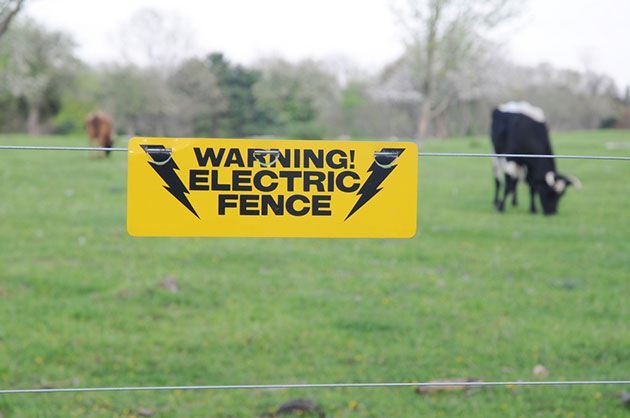
The City of Fort Worth’s 2017 Amended Electrical Code regulates the rules and standards.
The principles are similar to the California state.
Thus, Texas officials state that you are allowed to install the fence if:
- the structure utilizes more than two energized strands
- the minimum height is 24 inches from the ground to the highest strand
1. The required permits
To install and use the fences, you must submit:
- an electrical permit for the strands
- a building permit for the required protective barrier
- Access Control permit from Fort Worth Fire Department for the required key switch
In addition to these permits, you also have to submit the following documents:
- a site plan portraying the correct protection system, and the relationship between the structure and walkways, property lines, or existing buildings
- fencing details, including all gates, protective barrier, and the electric fence
- electrical details presenting the grounding, equipment wiring diagrams, and other information following the Fort Worth Electrical Code’s rules
- an Energizer Output Certification Form complying with section 202.108 of IEC 60335-2-76 international standards
2. Prohibited fencing areas
- All residential uses
- On rooftops or within buildings
- Within 30 feet of handling areas or hazardous material storage
- Within 5 feet of a building exit
3. Fence warning signs
- Must be both in English and Spanish
- Must be placed at all entrances to all secure areas
- Must be placed at 30-feet intervals along the whole perimeter of the fencing line
- Must have inner and outer warning signs
All these documents and the main application form should be submitted to the Development Services Department.
Fence laws in Virginia
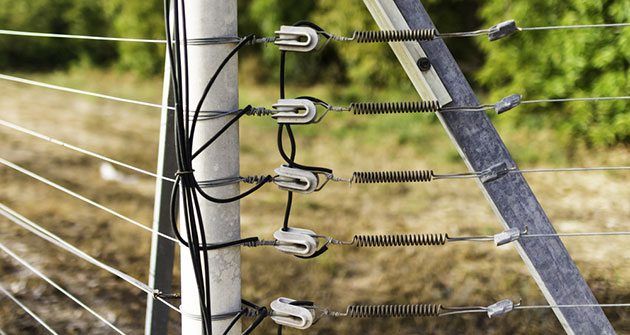
According to the Code of Virginia, no fence should be installed, sold, distributed, constructed, or maintained upon agricultural land if the system does not have a controlling device.
Such a device must obey the safety and security standards issued by the Underwriters Laboratories, Inc and the International Electrotechnical Commission.
In addition, the Code states that controlling devices should correctly utilize a ground system when placed in service.
1. Controlling devices
The devices must meet the following rules to use the fencing system:
- They must comply with various pulse outputs between two-tenths seconds and three-quarter seconds. They must decrease the power from 4 milliampere seconds to nine-tenths milliampere seconds at multiple intervals.
- Different devices deliver a maximum intermittent current output of a value not more significant than four milliampere seconds and a minimum of nine-tenths second.
- If the current exceeds 450 or 550 ohms.
The Code concludes that if farmers don’t follow the rules, they will be guilty of the Class 1 misdemeanor.
2. Approved fences
As the Code presents, every fence will be considered legal and lawful if it’s:
- At least 5 feet high
- Constructed of barbed wire, at minimum 42 inches high, with at least four strands of barbed wire, with support in the ground. The posts should not be spaced more than 12 feet unless the construction requires such a mechanism.
- Made of rails, planks, and boards at least 42 inches high, with support in the ground, trees, posts, or similar supporting system to protect livestock and equal animals.
- At least 3 feet high when within city limits, where no one has an official power to issue what lawful fencing is
- Any other fencing, except as otherwise described here, if it’s: a) at least 42 inches tall; b) is constructed from components accepted for the confinement or restriction of domestic livestock and similar animals or deterring wild animals; c) installed according to the generally accepted guidelines; therefore, the domestic animals and livestock cannot creep through the structure.
As the Code representatives explain, a required cattle guard should also be considered a lawful fencing type for animal protection.
3. The place of construction
As the Code states, any owner of a property on which there is a way or road, but not public places, highway, public road, street, or alley can place the gates or a cattle guardian to protect the livestock.
If the conditions are harsh, the principal owner should find a replacement method to keep the animals contained instead of a cattle guard.
For the guard’s actions, the primary responsibility is the owner.
If the animals trespass multiple times out of the confinement, the farmer will pay double fines – for punitive and actual damage.
4. Who makes laws?
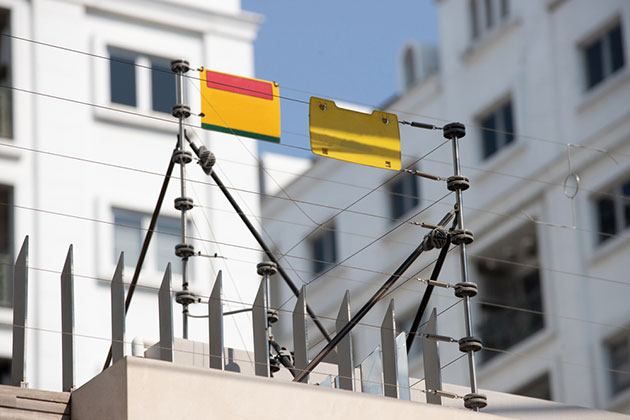
According to the Virginia Code, the authorities in the representative jurisdiction, municipality, and institutions can provide an ordinance for farmers to follow and use the fences correctly.
Once the rules are set up, farmers will visit their local Fire Departments and notify the principal officer or another authorized person in writing of the electrified security installation.
Farmers should also notify of the location where the security is placed. Of course, once they set up the systems, they must have the warning sign on the site.
Suppose farmers do not play by the rule.
In that case, they will have severe issues with the municipality, local jurisdiction, and other authorities and will have to pay fines for disobeying the rules.
Frequently Asked Questions
Can I put an electric fence around my property?
In the majority of the American States, electric fences are illegal if they touch public places, such as highways, public roads, neighbors, roadways, parks, etc.
However, you can apply for an exemption and find more information at your municipality authorities.
You will have to submit many documents to keep and maintain the fencing legally at the wanted site.
Otherwise, you’ll have to pay penalties and have serious issues with law authorities.
What is required for an electric fence?
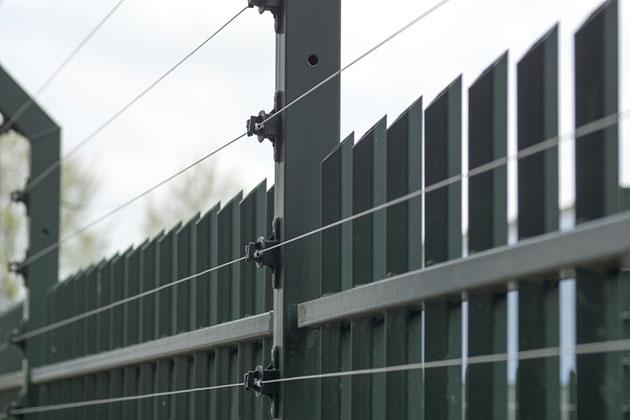
It would help if you had at least 3, 6 to 8 feet long rods placed at least 6.56 feet away from the charger and 9.84 feet apart from each other.
You will also need a galvanized wire to connect rods and clamps. Once you set up the fencing, check if it works properly.
Are electric fences legal in residential areas?
Yes, they are if the owner follows the rules and submits all required documents for the operation and project.
Also, it’s legal to install them if the local ordinance allows them. If not, they will be illegal.
Are electric fences legal in Texas?
Yes, if the system complies with the written rules and fence standards. It’s quite a similar procedure in the majority of states. Or else they won’t be legal.
Do you need a permit for an electric fence?
Yes, you must obtain it from your local authorities after submitting all necessary documents to grant the use and general structure.
Final verdict
So, do you plan to install an electric fence?
If yes, please, refer to your local authorities and follow the electric fence laws, to avoid further delays and complications.
In addition, always place a warning sign to mark the fencing site and examine if there are issues with the operation.
Finally, ensure with the officials if your fencing complies with legal actions or not.


What are the laws concerning electric farms in Connecticut? Thank you.